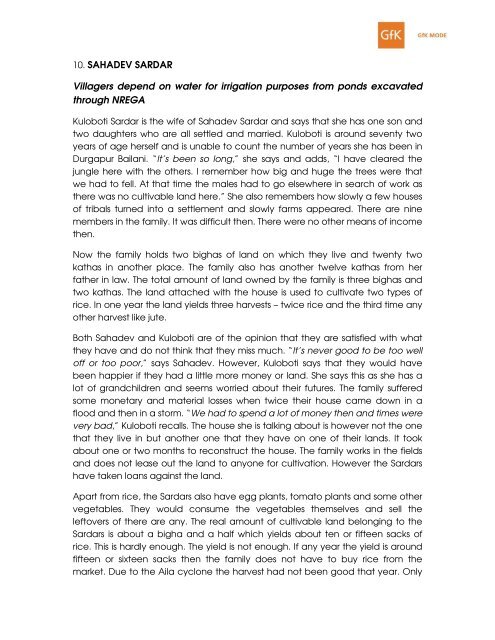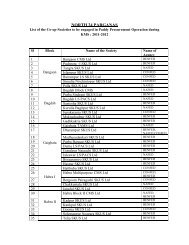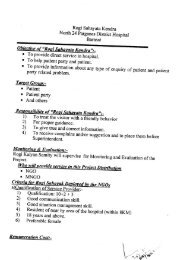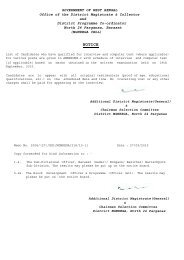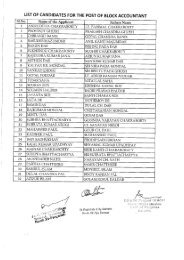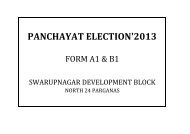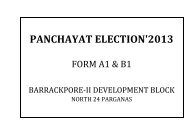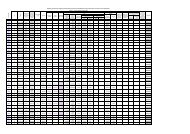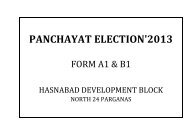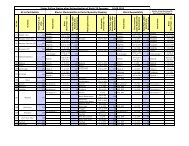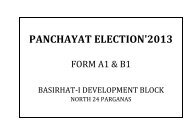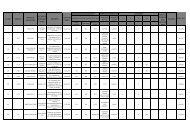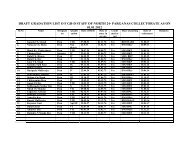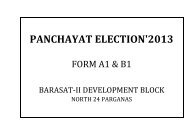You also want an ePaper? Increase the reach of your titles
YUMPU automatically turns print PDFs into web optimized ePapers that Google loves.
10. SAHADEV SARDARVillagers depend on water for irrigation purposes from ponds excavatedthrough NREGAKuloboti Sardar is the wife of Sahadev Sardar and says that she has one son andtwo daughters who are all settled and married. Kuloboti is around seventy twoyears of age herself and is unable to count the number of years she has been inDurgapur Bailani. “It’s been so long,” she says and adds, “I have cleared thejungle here with the others. I remember how big and huge the trees were thatwe had to fell. At that time the males had to go elsewhere in search of work asthere was no cultivable land here.” She also remembers how slowly a few housesof tribals turned into a settlement and slowly farms appeared. <strong>The</strong>re are ninemembers in the family. It was difficult then. <strong>The</strong>re were no other means of incomethen.Now the family holds two bighas of land on which they live and twenty twokathas in another place. <strong>The</strong> family also has another twelve kathas from herfather in law. <strong>The</strong> total amount of land owned by the family is three bighas andtwo kathas. <strong>The</strong> land attached with the house is used to cultivate two types ofrice. In one year the land yields three harvests – twice rice and the third time anyother harvest like jute.Both Sahadev and Kuloboti are of the opinion that they are satisfied with whatthey have and do not think that they miss much. “It’s never good to be too welloff or too poor,” says Sahadev. However, Kuloboti says that they would havebeen happier if they had a little more money or land. She says this as she has alot of grandchildren and seems worried about their futures. <strong>The</strong> family sufferedsome monetary and material losses when twice their house came down in aflood and then in a storm. “We had to spend a lot of money then and times werevery bad,” Kuloboti recalls. <strong>The</strong> house she is talking about is however not the onethat they live in but another one that they have on one of their lands. It tookabout one or two months to reconstruct the house. <strong>The</strong> family works in the fieldsand does not lease out the land to anyone for cultivation. However the Sardarshave taken loans against the land.Apart from rice, the Sardars also have egg plants, tomato plants and some othervegetables. <strong>The</strong>y would consume the vegetables themselves and sell theleftovers of there are any. <strong>The</strong> real amount of cultivable land belonging to theSardars is about a bigha and a half which yields about ten or fifteen sacks ofrice. This is hardly enough. <strong>The</strong> yield is not enough. If any year the yield is aroundfifteen or sixteen sacks then the family does not have to buy rice from themarket. Due to the Aila cyclone the harvest had not been good that year. Only


